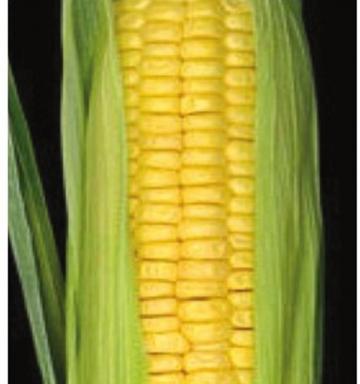
Maize (Zea mays)
Synonym: Corn
Local names: Hindi: Makka, Makai, Bhutta Manipuri: Chujak Marathi: Bhutta Tamil: Makka cholam Malayalam: Makka cholam Telugu: Mokka javanalu Kannada: Makkejola Konkani: Mako Urdu: Makka
Maize is the world’s most important feed grain because of its high nutritive value and good agronomic features. Maize can produce more energy per acre than any other cereal grain due to its C4 photosynthetic pathway. The C4 plants have a tropical origin and are inherently more productive than plants with C3 pathway. Maize is also unique among grains in having the male and female flower organs separately on same plant, which allowed development of high yielding maize varieties. There are seven types of maize including dent, flint, flour, pop, sweet, waxy and pod maize. Dent corn is the primary type grown as feed and sweet corn is the major type grown for human consumption. Dent corn is characterized by a dent or indentation at the top of the kernel, formed when the starch shrinks during drying.
Nutritive value
Maize is a high energy grain because it is high in starch and oil and low in fibre. Maize contains about 70% starch, 85-90% TDN, 4% oil and about 8-12% protein. The grains should be ground before feeding to the ruminants, otherwise they will escape digestion. Maize contains starch, which composed of about 25% amylase and 75% amylopectin. The starch in maize is more slowly digested in the rumen than that of the other grains and at high levels of feeding a proportion of starch passes in to the small intestine, where it is digested and absorbed as glucose. This may have advantages in conditions such as ketosis. The maize kernel contains two types of proteins. Zein occurring in the endosperm is quantitatively the more important, but this protein is deficient in the indispensible amino acids lysine and tryptophan. Now new variety of corn (opaque-2) has been evolved which is rich in lysine and protein. A newer variety, Floury-2, has increased contents of both methionine and lysine. A number of different types of maize exist and the grain appears in variety of colours, yellow, white or red. Only yellow variety has a fair amount of cryptoxanthin, a precursor of vitamin A. Yellow maize also contains xanthophylls which are important in poultry production for providing the yellow coloration of the egg yolk and of the skin of the broilers. Maize is a fair source of vitamin E and low in vitamin D and the B complex vitamins. In common with all plants, maize is devoid of vitamin B12 activity.
Deleterious factor
Maize does not intrinsically contain any toxic and deleterious compounds. However, it is often contaminated with mycotoxins which are of concern in animal feeding. The major mycotoxin of concern is aflatoxin produced by the mold Aspergillus flavus. The mold infects maize both in the field and storage. Drought and insect damage promote infection of the developing grain.
